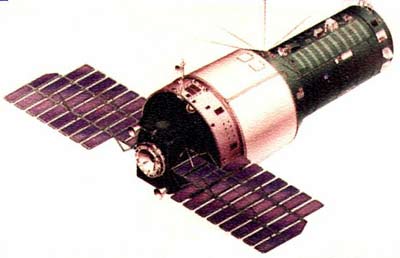
Recent news coming from U.S. outlets suggests that the Russians are preparing or perhaps have even placed a nuclear weapon in space. The idea of placing a weapon in Space is not new but the fact that this might be happening sooner rather than later is cause for concern.
The 1967 Outer Space Treaty, which the Soviet Union signed, specifically prohibits nuclear weapons or any weapons of mass destruction in Space. Oddly enough conventional weapons are not a part of this treaty. The Soviet Salyut 3 Space Station of the mid-70s had a “self-defense” cannon (either 23 mm or 30 mm) that it reportedly tested in Space with no cosmonauts on board. Although it is unsure what the Soviets were defending against with this type of weapon, reportedly the cannon did fire.
The Salyut 3 test is the only declassified weapon that has been deployed in Space; however, violently destroying objects in Space does not have to originate from Space.
ASAT Weapons
Anti-satellite weapons (ASATs) are not new but have become more prominent in the last decade. These are generally rockets or missiles with the sole purpose of destroying a Satellite in orbit. All of the major space powers including India, Russia, the United States, and China have tested some sort of ASAT weapons in the past. The U.S. appears to have backed off from testing these weapons but China, Russia, and India have made news in their recent tests. The last American “ASAT” test was performed more to destroy a failed satellite that had caustic hydrazine aboard and had a rapidly decaying orbit rather than to simply test the RIM-161 missile used.
ASAT weapons are generally dangerous to the Space Ecosystem. Destroying satellites with explosives, generally on a missile, leaves vast amounts of small debris that could destroy other satellites and spacecraft in orbit.
If Russia does indeed plan to deploy and possibly use a nuclear weapon in Space, that country is threatening all operators of spacecraft in the world: commercial, civilian, and military. Depending on orbit, a nuclear blast would create an immense amount of debris. This could trigger a domino effect known as Kessler Syndrome where debris would trigger the undirected destruction of many satellites. Best to leave the nuke at home.

Carter Palmer has long held a keen interest in military matters and aviation. As an analyst for Industrial & Marine Turbine Forecast, Carter specializes in examining key gas turbine programs for electrical power generation, mechanical drive, and marine propulsion applications. He is also responsible for updating the reports and analyses within the Space Systems Forecast – Launch Vehicles & Manned Platforms and Space Systems Forecast – Satellites & Spacecraft products.




